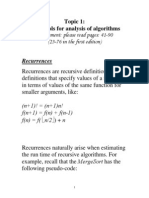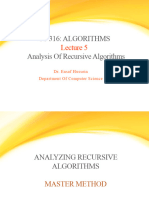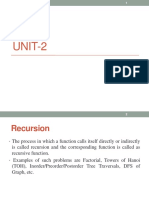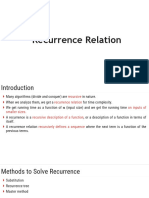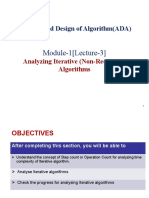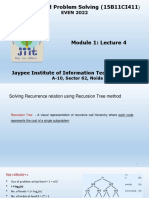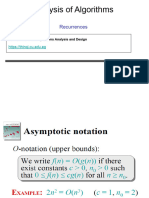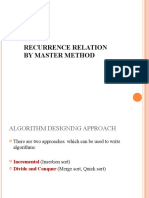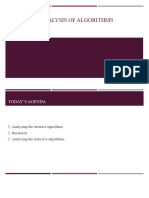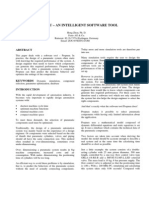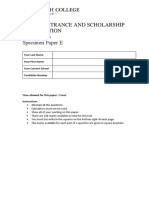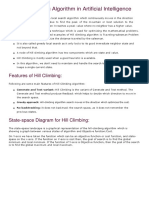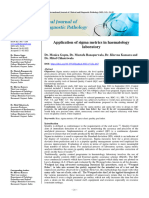0% found this document useful (0 votes)
17 views26 pagesRecurrence
The document discusses the concept of recurrences in algorithm analysis, defining it as an equation that describes a function based on its smaller inputs. It outlines methods for solving recurrences, including the Master Theorem, substitution method, and recursion tree method, with a focus on the Master Theorem's application to divide and conquer algorithms. Additionally, it covers properties of asymptotic notation such as transitivity, reflexivity, symmetry, and complementarity.
Uploaded by
nisargbhatt.nCopyright
© © All Rights Reserved
We take content rights seriously. If you suspect this is your content, claim it here.
Available Formats
Download as PDF, TXT or read online on Scribd
0% found this document useful (0 votes)
17 views26 pagesRecurrence
The document discusses the concept of recurrences in algorithm analysis, defining it as an equation that describes a function based on its smaller inputs. It outlines methods for solving recurrences, including the Master Theorem, substitution method, and recursion tree method, with a focus on the Master Theorem's application to divide and conquer algorithms. Additionally, it covers properties of asymptotic notation such as transitivity, reflexivity, symmetry, and complementarity.
Uploaded by
nisargbhatt.nCopyright
© © All Rights Reserved
We take content rights seriously. If you suspect this is your content, claim it here.
Available Formats
Download as PDF, TXT or read online on Scribd
/ 26











